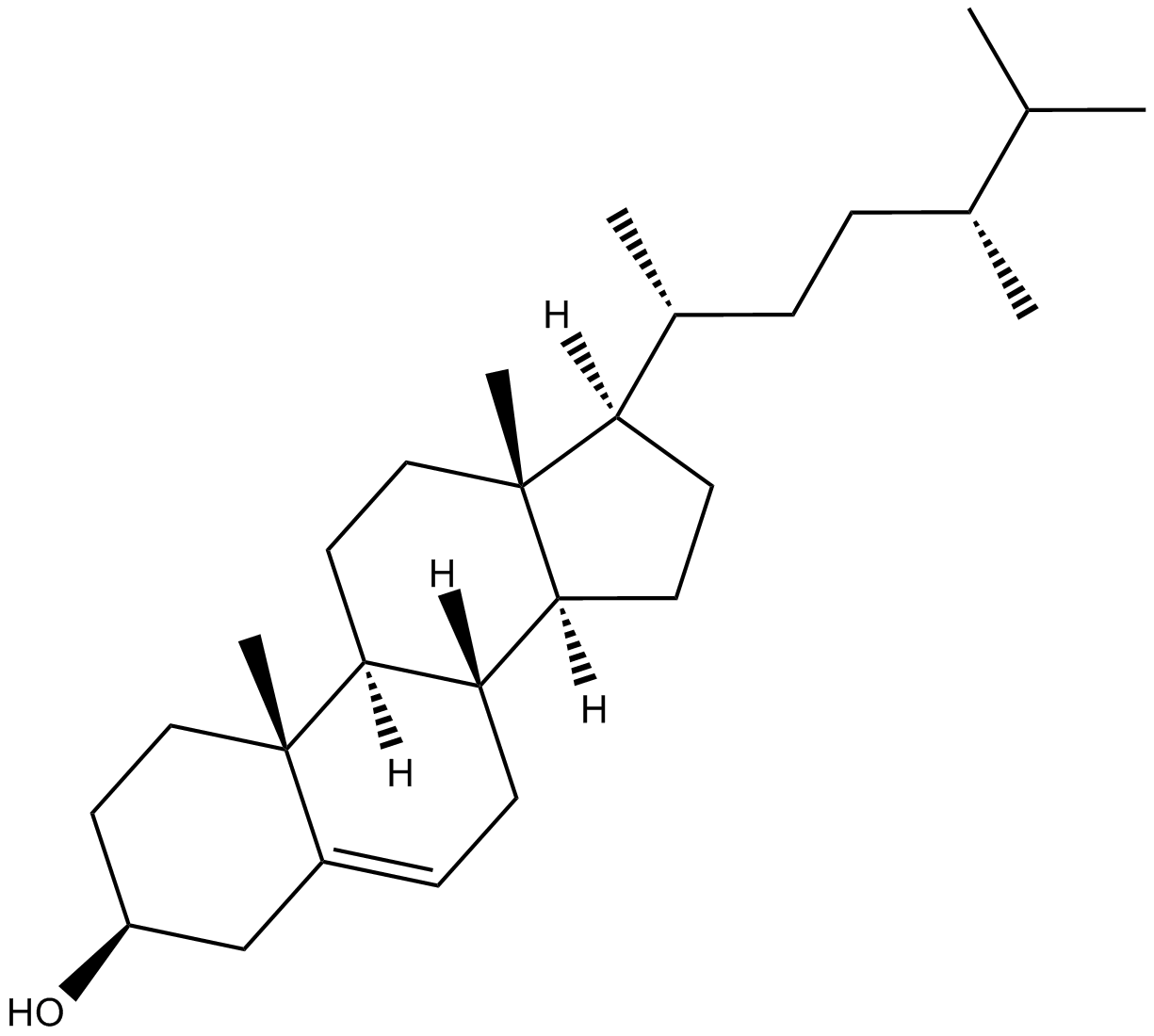24α-methyl Cholesterol (Synonyms: Campesterol,NSC 224330) |
| Catalog No.GC13431 |
24α-methyl Cholesterol is a plant sterol with cholesterol lowering and anticarcinogenic effects.
Products are for research use only. Not for human use. We do not sell to patients.

Cas No.: 474-62-4
Sample solution is provided at 25 µL, 10mM.
24α-methyl Cholesterol is an agonist of liver X receptors (LXR).
Liver X receptors (LXRs) are ligand-dependent transcription factors involved in the transcriptional control of lipid metabolism. LXRs function as nuclear cholesterol sensors that are activated by elevated intracellular cholesterol levels in multiple cell types. Activation of LXRs induces the expression of various genes involved in cholesterol absorption, transport, efflux, and excretion. In addition to their function in lipid metabolism, LXRs have also been found to modulate immune and inflammatory responses in macrophages. LXRα is highly expressed in the liver and at lower levels in the adrenal glands, adipose, intestine, lung, macrophages, and kidney, and LXRβ is ubiquitously expressed [2].
24α-methyl Cholesterol was a phytosterol found in vegetables, nuts, fruits, and seeds that competitively inhibited the absorption of intestinal cholesterol and decreased the transcription of genes important for cholesterol metabolism [3]. 24α-methyl Cholesterol acted as an agonist at liver X receptors (LXR) and suppressed the proliferation of prostate and breast cancer cells [1].
References:
[1] Chuu C P, Kokontis J M, Hiipakka R A, et al. Modulation of liver X receptor signaling as novel therapy for prostate cancer[J]. Journal of biomedical science, 2007, 14(5): 543-553.
[2] Zelcer N, Tontonoz P. Liver X receptors as integrators of metabolic and inflammatory signaling[J]. The Journal of clinical investigation, 2006, 116(3): 607-614.
[3] Segura R, Javierre C, Lizarraga M A, et al. Other relevant components of nuts: phytosterols, folate and minerals[J]. British Journal of Nutrition, 2006, 96(S2): S36-S44.
Average Rating: 5 (Based on Reviews and 40 reference(s) in Google Scholar.)
GLPBIO products are for RESEARCH USE ONLY. Please make sure your review or question is research based.
Required fields are marked with *




















